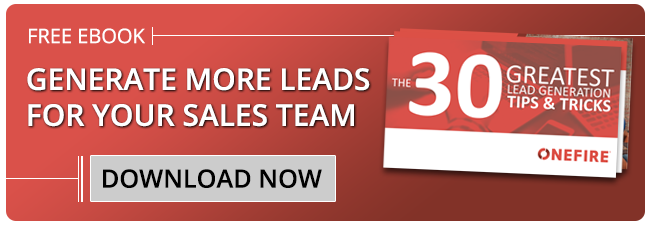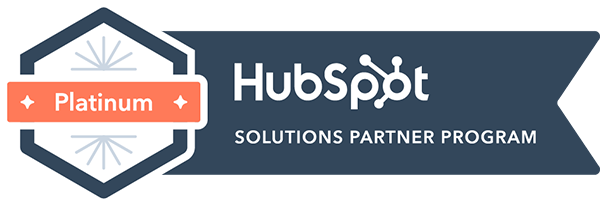 A targeted paid ads campaign gives you the tools to put your ad directly in the hands of your ideal clients. With the right setup, it can be an incredible return on investment for your business. But if your targeted ad campaign misses the mark, your potential customers might never even see it.
A targeted paid ads campaign gives you the tools to put your ad directly in the hands of your ideal clients. With the right setup, it can be an incredible return on investment for your business. But if your targeted ad campaign misses the mark, your potential customers might never even see it.
So, how do you ensure that your paid advertising pays off? Here are some places to start:
Why you should consider a paid ads campaign
With so many opportunities for free advertising online, why pay anything at all? It’s true that your content marketing, like your blog posts, social media and videos, are an important component of your overall marketing plan. They can boost your SEO, show potential clients that you are an authority in your field, and continue to remind your potential clients that you’re around. That all lays the groundwork, so when someone clicks on your ad and goes to your site, they can see the thoughtful, consistent content you put out regularly.
But a paid ads campaign takes that idea one step further. Instead of just hoping your content will end up where you want it to go, a paid campaign ensures that it does. You can pay to specify the age, gender, location, language, and general interests of your targeted audience, so you’re not wasting time advertising to people who don’t need your product or service.
Of course, there’s a fee to do this. And it can range from a couple bucks to thousands of dollars, depending on what you’re looking for.
What goes into a paid ad campaign?
Running a paid ad can be very accessible, but it can also be very complex. There are layers of categories, analytics and decisions that can be overwhelming for someone who isn’t familiar with paid ads.
There are different kinds of paid ads, including pay-per-click (PPC), pay-per-impression (PPI) and display ads.
Those ads are paid for just how they sound. You’ll pay per click with a PPC ad, per impression with a PPI ad, and for a display ad, you’ll often pay per size or location.
What should you budget for a paid ads campaign?
The beauty of a paid ads campaign is that you can typically see analytics in real time. It might take awhile to see if those ads convert scrollers into customers, but in terms of click-throughs and views, that information is often readily available.
This is helpful, because a lot of paid ads success comes from trial and error. If you’ve never run a paid ads campaign, it can be helpful to dip your toe in with a smaller, more affordable trial to see how things go. If it goes well, you can incrementally invest more to see what has the best payoff for your business.
You should also budget based on whether you plan to DIY your paid ads campaign, or work with someone to help you build your campaign. Depending on the size and scope of your campaign, investing in assistance could be a smart strategy to make the most of your paid ads.
The best B2B paid ad options
Successful business-to-business (B2B) advertising strategies are different from the business-to-customer approach. A B2C ad campaign is intended for everyday consumers, but the goal for B2B advertising is to reach other businesses. These two target clients don’t generally hang out in the same places online, so placing an ad on just any social media site isn’t the best approach.
The best paid ad strategy for your business is unique to you, but typically, these options perform the best for B2B advertisers:
Youtube: Video has become an increasingly important medium for marketing, and that goes for advertising, as well. Clever, captivating video ads can capture attention and make your business stand out.
YouTube is one of the largest and most-used search engines, and people in every industry use it to create, learn and build online communities. For advertisers, YouTube offers a geo-targeting option for paid ads, which allows you to target businesses only in your servicing area. Or, if you do want to reach wider areas, you can still use geo-targeting to customize your ad for different regions.
LinkedIn: As the largest professional network, LinkedIn is a natural fit for B2B advertisers. Considering that 80 percent of social media B2B marketing leads come through LinkedIn, it can be a very smart place to run a paid ads campaign.
LinkedIn offers three ways for companies to advertise: sponsored content, text ads and sponsored InMail.
Sponsored content comes in single image ads, video ads and carousel ads that can run in the newsfeed.
Text ads are a budget-friendly ad solution on LinkedIn, and they’re a great way to get your feet wet if you just want to test the waters without investing hundreds or thousands of dollars.
Sponsored InMail, also known as message ads, allows you to directly message your prospects with sponsored content on LinkedIn.
Facebook: You might associate Facebook more with B2C advertising, but for certain businesses, Facebook has a ton of B2B potential. Whatever industry you’re in, you’re bound to find engaged business communities that match your ideal prospect. According to CMI, 86% of B2B advertisers consider Facebook to be an important part of their lead generation.
The challenge with Facebook is that it has billions of users, and those users are often scrolling casually. They might not be looking for a business solution at that moment, so it’s more difficult to grab their attention. With so much going on, your ad might not stand out as well as you’d like it to.
The good news here is that Facebook is serious when it comes to ad targeting. You can opt for more surface-level targeting for your ad, like industry and location. Or, you can really hone in and target only people who are in a certain industry, in your area, and use an Android phone, for example.
Whatever you decide to do, remember that there’s a lot of trial and error in running an ad campaign. Start small, learn along the way, and if you feel overwhelmed, there are professional options that can help you create a successful campaign.




